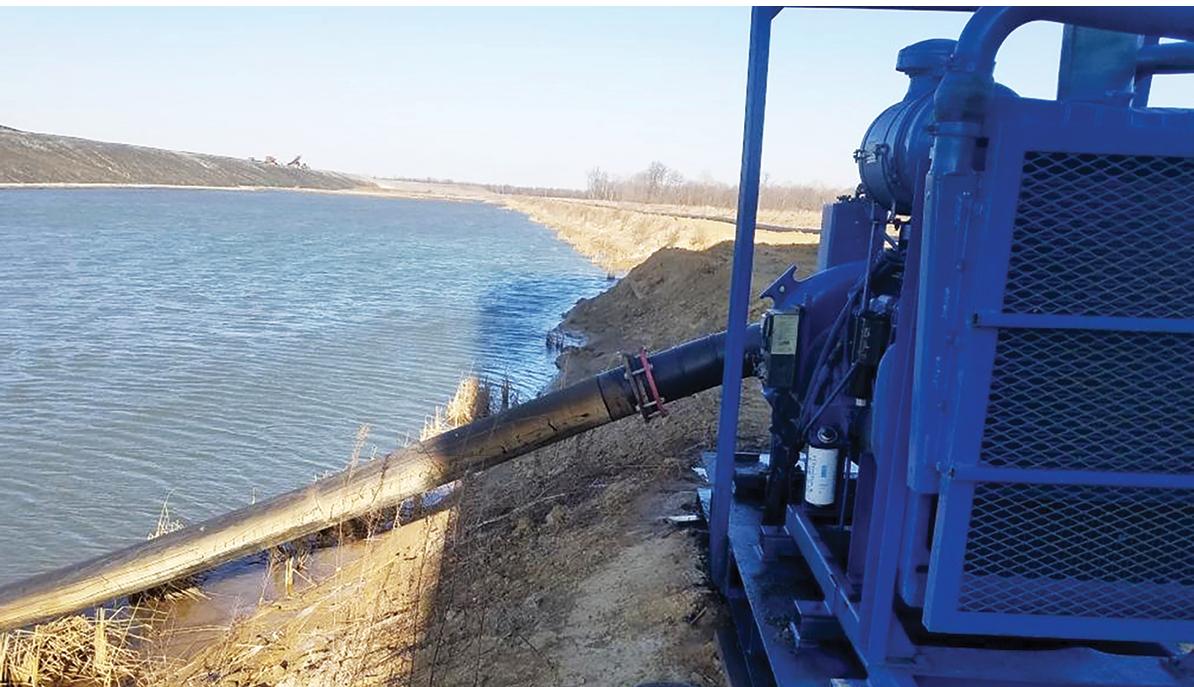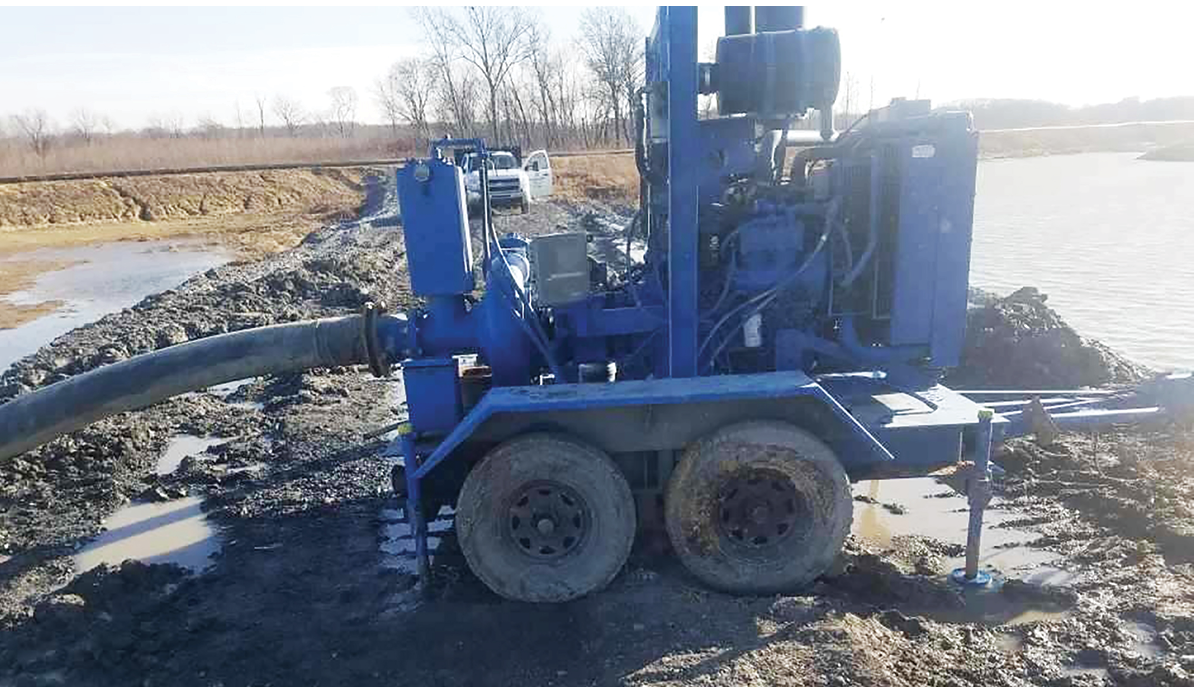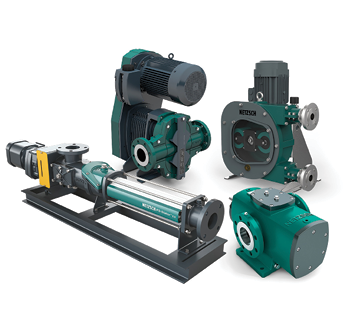A case study on high-capacity dewatering implementation to ensure uninterrupted operations for surface mines.

In surface mining, efficient and reliable dewatering is essential for both safety and operational success. It ensures improved working conditions, enhances geotechnical stability and boosts overall efficiency for the mining operations.
This was the case at a mining complex in the Midwest, said to contain 1.3 billion tons of clean, recoverable coal reserves. Unfortunately, the site faces challenges, with ponds and other materials overlaying the mineral deposits, making a reliable dewatering system a critical requirement.
The challenge
To begin dewatering operations, a local mining company – one of the largest underground coal mining companies in the United States – began working with a local area distributor to procure the pumps needed to dewater the multiple existing ponds in the property and then refill new ponds being excavated. This process had to be repeated across multiple ponds throughout the entire complex, as the water was also being used to support the entire mining operation.
Unfortunately, this required high-head and high-volume dewatering pumps, pumps the local company did not have. The pumps they were using were failing, likely due to the high volume of water, and using these lower-volume pumps meant crews were spending a lot of unnecessary time trying to move the water, which slowed down the entire operation. The mining company knew it needed pumps capable of handling the high-head and high volume of dewatering needed, especially since they were moving the water over distances of a half mile to a mile. Dewatering pumps available in the area couldn’t meet that need.
That’s when the mining company called on Jared Stratton, who is rental manager at Service Pump and Supply. He knew that, in order to handle the project’s demand, he needed to contact the “dewatering guys” at Thompson Pump.

The solution
In working with Thompson Pump and Manufacturing Company, the team brought in the 8JSCE and 12JSCG model pumps – the 12-inch pumps to move water from pond to pond and the 8-in. pumps to deliver water for the mining operation itself. The 8JSCE and 12JSCG are not only reliable but eco-friendly, dry-priming electric-driven models that provide large solids-handling capabilities.
The pumps were also equipped with Thompson Pump’s exclusive Enviroprime compressor-assisted priming system that eliminates product blow-by. The eight-inch pump features flows up to 3,200 gallons per minute (gpm) and high heads up to 300 feet and solids handling up to 3 in. The 12-in. pump has flows up to 5,200 gpm, high heads up to 350 ft. and solids handling up to 3.38 in.
The results flow in
Starting with two of each pump, water soon began flowing more efficiently and quickly. To increase capacity even more and cut down on the dewatering time, the team added more pumps for a total of five each, with the system running across the entire mining property.
The specialty pump system remained at the mining complex for about three years, while the surface mining project continued. The pumps’ ability to handle high-head and high-volume dewatering along with their low maintenance and automatic priming which enabled the pumps to run dry unattended, helped to keep the project on track, on time and on budget.
“Without this pump system, the project would have run into numerous setbacks and unforeseen expenses,” said Stratton. “I’ve been a Thompson Pump customer for a very long time. I’m glad we were able to get this job done thanks to these pumps and their flawless capabilities.”
Due to the demand for minerals, surface mining continues across the country and the world. As projects begin and expand, dewatering continues to be a critical component. Investing in reliable and cost-effective pump systems, customized for each project, will help keep time and costs under control.
NETZSCH Pumps USA brings movable dewatering pump skids, more to SME 2025
Anyone on the hunt for more information about compact, moveable dewatering pumps and pump skid units will be in luck in Denver at SME MINEXCHANGE 2025.
The company will spotlight the Nemo Progressing Cavity Pump, Tornado T2 Rotary Lobe Pump, Peripro Peristaltic Pumps, Notos Multi Screw Pumps and Mine Dewatering Skids, all ideal for underground mines that require a small, compact movable unit to address their dewatering challenges.

The Nemo progressing cavity pump is known for its ability to efficiently transfer viscous mineral slurries without being affected by fluctuations in pressure or solids content. NEMO pumps are also the gentlest and safest choice for high performance pumping of emulsified/liquid explosives.
Another option for mining applications is the Tornado T2 Rotary Lobe Pump, a self-priming, valve-less pump that offers maximum operational performance, high reliability and durability, ease of maintenance, and a low total life cycle cost. With a revolutionary design that has been recently reengineered to maximize uptime, the Tornado T2 pump features metal lobes running inside a metal housing with an elastomer liner.
The Notos Multi Screw Pumps ensure reliability of the ball mills and SAG mills, where consistent and continuous lubrication is essential. Notos pumps are the ideal solution to supply the injection unit as well as handle the lubricant circulation operation.
Peripro Peristaltic Pumps have a heavy-duty construction for demanding applications, with large, easy-to-maintain rollers for longer service life. These pumps are ideal for complex fluids, such as abrasive, corrosive, viscous, and delicate products. Ultimately, this pump design provides energy savings up to 30%, and requires 90% less lubricant when compared to other peristaltic pumps using shoe technology.
NETZSCH said the pump types, as well as the dewatering skid tank, can be constructed from carbon steel, stainless steel, galvanized steel, and Halar/rubber-lined steel, depending on application needs.
NETZSCH Pumps and Systems is the largest business unit in the NETZSCH Group.
